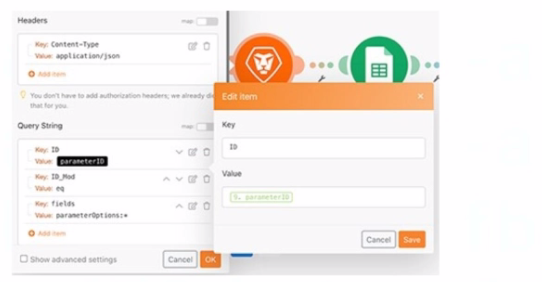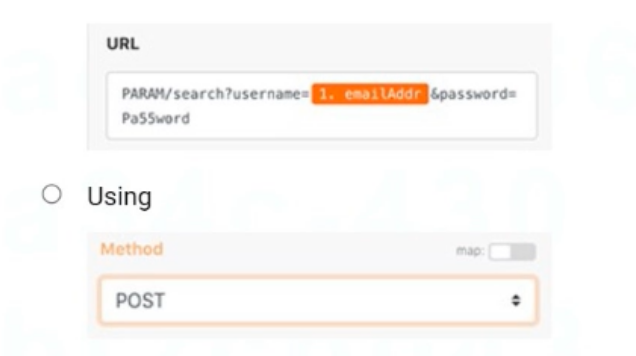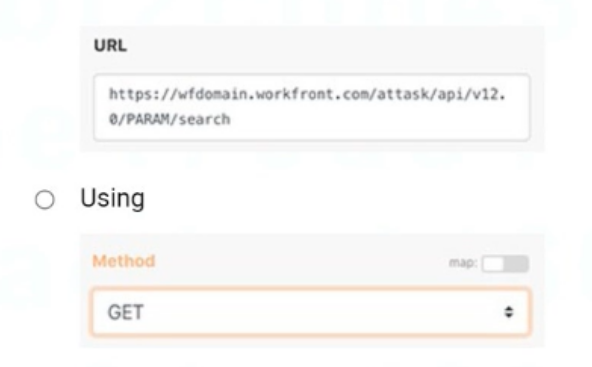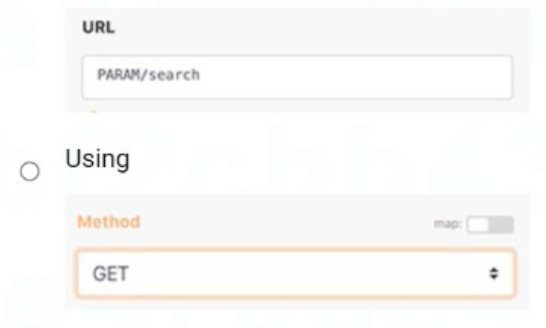Adobe AD0-E902 Adobe Workfront Fusion Developer Professional Exam Practice Test
A Fusion scenario uses an HTTP module to create a new record.
Which response code indicates that the connection was successful?
Answer : B
Understanding HTTP Response Codes: HTTP response codes are standardized codes that indicate the result of a request made to a server:
2xx (Success): Indicates that the request was successfully received, understood, and processed by the server.
200 OK: Specifically means that the request was successful, and the response contains the requested data or confirms the operation's success.
Response Code for Creating a Record:
When using an HTTP module in Fusion to create a new record, a response code of 200 confirms that the request to the server was successfully processed and the record creation was successful.
Why Not Other Options?
A . GREEN: This is not a valid HTTP response code. It might represent a status in some systems but is unrelated to HTTP standards.
C . 402: This code indicates a payment required error, meaning the request cannot be fulfilled until payment is made.
D . 500: This is a server-side error, indicating that something went wrong on the server during processing.
HTTP Status Code Documentation: 200 Success Response
Adobe Workfront Fusion Documentation: HTTP Module and Response Codes
REST APIs commonly implement CRUD operations, including Create, Read, Update, and Delete.
Which two actions is an object ID generally required to be provided as an input? Choose two.
Answer : A, B
Object ID in CRUD Operations: REST APIs commonly use CRUD operations to interact with resources. The Object ID serves as a unique identifier for the resource and is generally required for the following actions:
A . Update:
To update a specific resource, the API must know which resource to modify. The Object ID is used to identify the exact resource that should be updated.
Example: A PUT or PATCH request typically requires the Object ID in the URL or body of the request.
URL Example:
PUT /tasks/{id}
B . Delete:
Similarly, when deleting a specific resource, the Object ID is needed to ensure the correct resource is removed.
Example: A DELETE request requires the Object ID in the URL to target the specific resource.
URL Example:
DELETE /tasks/{id}
Why Not Other Options?
C . Respond: This is not a standard CRUD operation in REST APIs and does not involve an Object ID.
D . Create: The Create operation (typically POST) does not require an Object ID because the resource does not yet exist. Instead, the API usually generates the Object ID after creation.
REST API Documentation Best Practices: CRUD Operations
Experience League: Understanding CRUD in Workfront APIs
A user needs to find a fields options within a custom form field. The details for the request are shown in the image below:

Which option is applicable for the URL text box?
A.

B.

C.

Answer : B
Step-by-Step Explanation
Purpose of the Query:
The task is to retrieve field options from a custom form field. This operation involves fetching data, not creating or modifying it, which requires a GET method.
Correct API Structure:
The URL must follow Workfront's API structure:
ruby
Copy
https://{your-workfront-domain}/attask/api/{version}/{endpoint}
Option B follows this standard structure, where:
wfdomain.workfront.com is the placeholder for the Workfront instance.
/attask/api/v12.0 specifies the API version.
/PARAM/search is the endpoint to search for parameters or fields.
Why Not Other Options?
A: The use of POST is incorrect because it is meant for creating or updating resources, not retrieving data. Additionally, the URL structure is incorrect and includes unnecessary query strings (username, password) not relevant for this operation.
C: While the method GET is correct, the URL (PARAM/search) is incomplete and lacks the required Workfront API structure, making it invalid.
Reference
Workfront API Documentation: Querying and Retrieving Custom Form Field Data
Experience League Community: Best Practices for Using GET Methods in Workfront API
A Fusion user needs to connect Workfront with a third-party system that does not have a dedicated app connector in Fusion.
What should the user do to build this integration?
Answer : A
Understanding the Requirement:
If a third-party system does not have a dedicated app connector in Workfront Fusion, users can still build an integration using Universal Connectors.
Universal Connectors in Fusion allow users to configure custom API calls, enabling communication with systems that lack pre-built integrations.
Steps to Build the Integration:
Determine the API Structure: Review the third-party system's API documentation to understand the available endpoints, data formats (e.g., JSON, XML), and request/response structure.
Identify Authentication Protocols: Determine how the third-party system handles authentication (e.g., API keys, OAuth 2.0, Basic Auth).
Configure the Universal Connector: Use modules like HTTP Request or Webhook to make API calls to the third-party system based on the documented structure.
Why Not Other Options?
B . Create a new connection to the third-party system in the connections area and then the Universal Connectors will be available for use: Creating a new connection in the connections area is only applicable for predefined connectors, not for Universal Connectors, which require manual configuration for unsupported systems.
C . Use the Workfront Custom API module to set up the connection using API calls to the third-party system: The Workfront Custom API module is specifically designed for Workfront's own API, not for connecting to third-party systems.
Adobe Workfront Fusion Documentation: Using Universal Connectors for Custom Integrations
Experience League Community: Integrating Third-Party Systems Using Workfront Fusion Universal Modules
A custom API call to a web service is used inside of a high volume iteration. The module that calls the web service sometimes returns an error - 429: Too many requests.
Which two actions may be used to address this error? (Choose two.)
Answer : A, C
When encountering the error 429: Too many requests, which indicates the web service is being overwhelmed by requests, the following actions can help:
A . Add a Sleep Module:
Adding a Sleep module introduces a delay between iterations, reducing the frequency of API calls.
By slowing down the rate of requests, you avoid hitting the rate limits of the web service, thus reducing the chances of receiving a 429 error.
This approach is useful for managing high-volume iterations without overloading the external service.
C . Add a Module to Test the Service for Errors:
Adding a module to test the service's response before making a call can help prevent the 429 error by checking if the service is ready to handle requests.
This preemptive check allows the scenario to conditionally execute, ensuring that it doesn't overwhelm the service and respects the API rate limits.
Why Not Other Options?
B . Use an Ignore Directive: Ignoring errors can be risky because it would cause the scenario to ignore 429 errors, possibly leading to failed API calls that are not addressed. Ignoring an error doesn't solve the issue of too many requests being sent to the service.
D . Use a Break Directive: The Break directive would stop the execution, which is counterproductive when trying to resolve the issue by reducing the rate of requests. It would not address the root cause of too many requests.
Adobe Workfront Fusion Documentation: Handling API Rate Limiting with Sleep and Error Handling
Experience League Community: Managing Web Service Errors in High-Volume Iterations
A source system should provide a Workfront task ID, but queries keep resulting in an error.
Which module helps determine if the task ID is valid?
Answer : C
To determine if a task ID is valid in Workfront, you can use the Search Record module. This module allows you to search for records, such as tasks, within Workfront based on a given ID.
Search Record Module:
This module can be used to search for a specific task in Workfront by its task ID.
If the task ID is valid, it will return the task details; if the task ID is invalid, it will return an error or no results.
The Search Record module is designed to check if a specific record exists in Workfront, making it ideal for verifying the validity of a task ID.
Why Not Other Options?
A . Read Record: This module reads a specific record by ID but does not search across multiple records. It may not provide the flexibility needed to check if a task ID is valid without knowing the exact task ID.
B . Read Related Record: This module is used to read a related record (e.g., reading the project related to a task). It is not suitable for validating a task ID directly.
Adobe Workfront Fusion Documentation: Search Record Module Usage
Experience League Community: Verifying Record IDs in Workfront Fusion
What are two required elements of a test case? (Choose two.)
Answer : A, C
A . Expected Outcome of Test
A test case must clearly state what the expected outcome is, providing a standard against which the results can be measured.
This ensures testers can validate whether the scenario behaves as intended.
C . Clear Procedure for Completing the Test
A well-defined procedure outlines the exact steps required to execute the test, ensuring consistent and repeatable testing.
This reduces ambiguity and helps identify whether errors are due to the scenario configuration or improper test execution.
Why Not Other Options?
B . Name of Test Owner: While helpful for accountability, the name of the test owner is not a required component of the test case itself.
D . Source Code Being Tested: Fusion scenarios do not typically involve source code. Instead, the focus is on workflow execution and configuration, making this element irrelevant.
Workfront Training Materials: Test Case Design Best Practices
Adobe Workfront Fusion Documentation: Testing and Debugging Scenarios